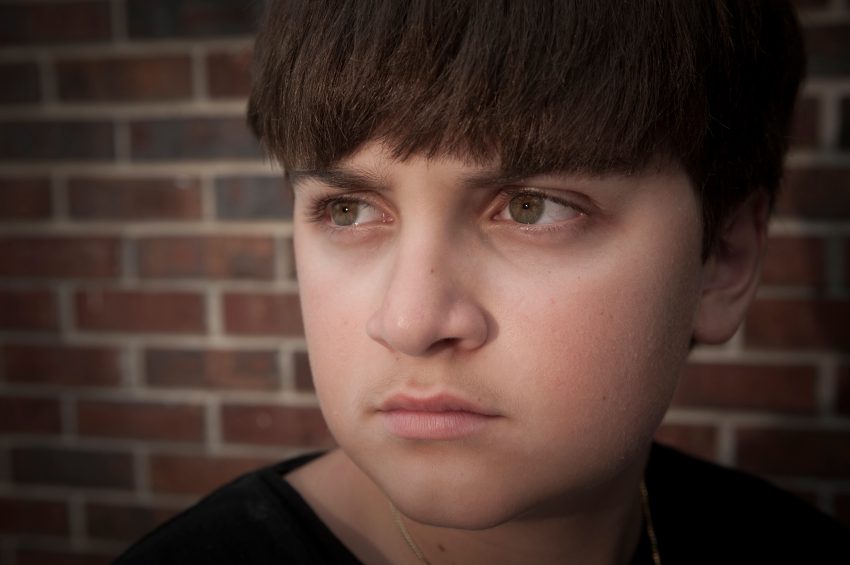Violent Schoolyard Scribbles: How Can Teachers, Doctors And Parents Tell If A Child’s Scary Drawings Are A Cause For Concern?

Posted in: Grade School, Hot Topics
Topics: Behavioral Issues
The resident, Dr. G., arrived for a four-hour shift. A pediatrician in his second year of training, he was in the midst of a rotation designed to teach him about psychiatric problems in children. One afternoon a week he joined the first year (post-graduate year II) psychiatry residents in the APS, hoping that there would be a patient under 18 needing evaluation so that he could gain some experience. Among the long list of patients on the dry-erase board in the back room where the doctors sat busily entering information into computers, Dr. G read that Gabriel was 8 years old, that he was apparently planning to kill his second grade teacher, and that his mother wanted a note for school. He checked in with the attending psychiatrist, and wrote his initials beside Gabriel’s name on the board so the other residents would know that he was taking the case.
8-year-olds are fun to interview, as most love to talk about themselves. They are generally eager to please, engaged in mastering new skills, and comparing themselves to their friends. They are also quick to insist that everyone has to follow the same rules, and complain if the rules are not fair. The problem is that, despite their willingness to talk freely, 8-year-olds tell stories that may have nothing to do with why they are in the emergency room. Their perspective on what has landed them in this predicament is rarely the same as that of the adults who are worried about them. A child who says he wanted to die when he was the last one picked for floor hockey can help us understand that he feels badly about his athletic prowess and/or that he is not well-liked by his peers. Yet we could not expect that same child to describe his longstanding delays in fine and gross motor development, coordination, and age-appropriate social interactions—information that helps to place his experience in gym in a different framework. The child’s view is important—but it is only one piece of the puzzle.
For these reasons, sometimes it is more helpful to hear from a parent or other caregiver before talking one-on-one with the child. But, in this case, there was no way that Dr. G could leave Gabriel alone in what seemed to be a more than unsavory waiting room. He grabbed the “Child Template,” which listed all the questions he was supposed to ask during an interview of this type, flashed his ID badge at the security lock inside the unit, opened the door to the waiting room, and called the child’s name. Gabriel and his mother followed him through the locked door and into an interview room.
Interview rooms are quite small and uncomfortable, with uniformly dirty beige walls and floor, two or three blue chairs, and a desk bolted to the wall. There are no frills, no soft edges, and no colorful pictures, only the bright, unforgiving glare of fluorescent ceiling lights. Gabriel took one chair, his mother another, the doctor the third. Then, Dr. G. started at the beginning: name, age, address, insurance company, legal guardian. All of that information was, of course, already stored somewhere in the hospital database, but asking the questions directly sometimes has added benefits. An emergency room evaluation, for better or worse, has one goal: disposition. In order to guide the patient to the next stop, you have to know where he started. Like those board games, aptly named Sorry or Trouble (which kids in Gabriel’s age group love to play)—if you land on the wrong square, you have to go all the way back to the beginning. With child psychiatry in particular, geography can shape destiny. It’s not helpful to admit a child to a hospital, or refer him to a clinic that is located far from his home. Family members may not even be able to get there, let alone participate actively in treatment. If the patient is lucky enough to live in a town with a high tax base, there will likely be more services available, either within the school setting, or from other community-supported resources. If he isn’t, resources may be impossible to come by. Knowing where the patient comes from lets the interviewer consider options for disposition at the same time as he is learning about the problem.
“My name is Gabriel,” answered Gabriel. “I live in Revere.”
“No, you don’t,” interjected his mother, “You live in Winthrop. We just moved,” she explained apologetically. “He forgets.”
Gabriel blinked.
“Did you have to switch schools when you moved, Gabriel?” Dr. G. asked him.
“No.” Mother answered again. “I asked special permission for him to continue at the same school that he’s been attending since he was in kindergarten, at least until the end of the school year. I have to drive him, but it’s not far. I just don’t understand what happened today. He has been doing so well. He used to have tantrums at school all the time, but he has been much, much better. He even has a good friend in his class this year. I don’t think he’s done anything bad, not really. The vice principal says that he threatened Miss Manchester, but I don’t believe it. He’s not that kind of boy. He wouldn’t hurt anyone. He loves to draw,” she added as an afterthought, “I think it was his drawings that caused the problem.”
“Can you tell us what happened today?” Dr. G. asked Gabriel.
“I drew a bad picture,” he muttered, looking down at his legs, which didn’t quite reach the floor.
“What was bad about it?”
“I was mad at Miss Manchester. It wasn’t nice.”
“Can you show it to me?”
Gabriel started rustling around in his backpack.
“Why were you so mad at her?”
“It was reading. We were having reading. I’m supposed to be reading about Clifford, but she gave me a chapter book.”
“Clifford the Big Red Dog?” The resident had suddenly remembered a cartoon in which a large red dog parades around a town doing good deeds.
For the first time, Gabriel looked up. He smiled shyly at Dr. G. “Yeah. Clifford. I like Clifford. She told me I was too old for Clifford, and I should read something else.”
“Gabriel has a learning disability,” his mother said. “Reading is difficult for him. He gets special help. His regular teacher, Mrs. S., works with him on reading. I don’t know why Miss Manchester didn’t remember that.”
“But I thought Miss Manchester was the teacher?” Dr. G. asked.
“She’s the assistant teacher. She’s very young, but she’s filling in because Mrs. S. is out having a baby.”
Gabriel suddenly hopped out of his chair and began to move somewhat aimlessly around the room. “I was mad,” he said, and his eyes filled with tears. “I drew a picture. I was really mad and so I thought about stabbing Miss Manchester with a knife.” He went back to his chair, reached into his backpack and pulled out a sheaf of papers.
“Here,” he said, thrusting a piece of paper into Dr. G’s hand.
“I drew this and Miss Manchester got really upset. She almost started to cry. I didn’t want her to cry. I was just mad.” Tears ran down the boy’s cheeks. He ran to his mother and hid his face on her shoulder. She put her arm around him.
“He’s not a bad boy,” she said. “He’s never hurt anyone. He never even gets into fights with the other kids. They sometimes make fun of him, but he never does anything.”
Dr. G. looked at Gabriel’s mother, and then at Gabriel.
“What does your picture mean?” Dr. G. asked him.
“I was so mad that I wanted to hurt her. See, I took a big knife and I hurt her with it. See, she is crying.”
“So after Miss Manchester got upset, then what happened?”
“I drew another picture,” he mumbled into his mother’s shoulder.
“You drew another picture? Can I see that one, too?”
“I didn’t really want to hurt Miss Manchester. I was just mad at her.” Gabriel sat down on the floor. “It was just a picture,” he said after a bit.
“Where is the other picture?”
Gabriel pulled his backpack toward him, and started taking everything out. Soon, amidst his crumpled papers, he found another sheet that he handed to his mother.
“She was crying, so I drew this,” he said.
“Did Miss Manchester see this second picture?” asked Dr. G.
“No,” replied Gabriel. “She ran out of the room before I could show it to her.” He leaned forward and put his head in his hands.
“You see,” said Mother, “I told you that Gabriel was a good kid.”
“I like Miss Manchester,” he said, lifting his head up to look at Dr. G. Then he added, shyly, “I thought she liked me, too. I knew I had made her upset. I wanted to make up. That’s what you do, isn’t it?” he asked Dr. G. “It was just a picture. I didn’t really hurt her. She’s my teacher. I don’t want to hurt her. Sometimes she’s nice.”
* * *
Scary drawings are the catalyst for many children’s emergency room visits. This is the post-Columbine, post-Virginia-Tech era, marked by several highly-publicized and devastating school shootings and, in Massachusetts, the fairly recent stabbing death of one high school student at the hands of another. Teachers and administrators are understandably afraid to interpret violent drawings and reach conclusions about their students’ ideas or fantasies, capabilities or intentions. While it is usually teenagers who draw graphic images of dismemberment or mass destruction, elementary school children are referred on occasion for similar reasons. There is little, if any, evidence that children’s violent drawings portend violent action, but that fact can be difficult to remember when one is faced with these dramatic and sometimes gory pictures. School administrators and even seasoned therapists often demand an emergency psychiatric evaluation when confronted with their students’ or patients’ explicit or powerful drawings.
Not all children sent directly to the ED from school with the question “safe to return?” stamped on their registration packet come with the answer to that question sketched on notebook paper in black and white. Drawings are usually only an admission ticket; they must be understood in the context of the child’s developmental stage and social environment. After Dr. G. met with Gabriel and his mother, he spoke with the attending psychiatrist, and then called the vice principal to talk about what had happened, and how he might help teacher and student to mend their fences. Luckily, Gabriel was just an 8-year-old with a learning disability, perhaps somewhat less mature than many of his second grade classmates, who was embarrassed that he read less well than other members of his class. When his teacher shamed him, he got upset and angry, and drew a picture to express his feelings. But Gabriel had strengths; he had the ability to manage those feelings by drawing pictures—not by throwing a tantrum, or running out of the classroom, or hurting himself or anyone else. He also had a conscience, a developing super-ego, and he knew his picture would hurt his teacher’s feelings. To make amends, he quickly drew another one to show that, even though he was mad, he still loved her. He had experienced intense and disturbing emotions: he wanted both to hurt her as he had been hurt, and to love her the way he wanted to be loved. In an effort to master his feelings and prevent himself from acting in a way that he knew was reprehensible, Gabriel drew a picture of his fantasies, both the good and the bad. Not only did he draw them clearly, he was willing to talk about them when asked.
If only all school-age children sent to the emergency room directly from school could tell a story like Gabriel’s, one in which child development played out in all its glory right in front of our eyes. The question of whether or not Gabriel was safe to return to school was easy to answer. For many children, it is not. Gabriel’s drawings were not the problem, they were the solution. His mother and, later, his other teachers, described Gabriel as a sweet boy who was liked by his classmates; he used to have tantrums when frustrated and upset where he cried and occasionally sucked his thumb, but he had matured over the past year, rarely getting upset in class despite his ongoing struggles with reading. He had never hurt anyone before, nor had anyone hurt him; the likelihood that he would do something dangerous in his second grade classroom was low.
School administrators and teachers often demand that a child psychiatrist write a note documenting that a child who has voiced threatening statements or written or drawn scary stories or pictures can remain “safe” at school. But, an emergency room evaluation captures only a discrete moment in time, a cross-section rather than longitudinal view.
No psychiatrist, regardless of experience or skill, can, after one interview, predict a patient’s future actions, not even those of an 8-year-old with a penchant for drawing. No child leaves the APS with a note guaranteeing that he can be safe at school; there are no guarantees. In Gabriel’s case, Dr. G. recommended that the teacher and the vice principal meet with Gabriel, listen to his entire story, and then make a judgment as to whether or not they could welcome him back to the class. The decision as to whether or not Gabriel was “safe” in the second grade ultimately rested with the school. Would Miss Manchester, the object of his anger and admiration, continue to worry that Gabriel would come after her? Or, would she be able understand the conflicted, intense feelings of her student, and appreciate them as an example of a normal developmental stage? Would she be willing to try to work with him, perhaps in conjunction with a school social worker or psychologist, in order to help Gabriel express his feelings differently? Let’s hope so. Gabriel was certainly no angel, but he wasn’t a demon, either.
A version of this post originally appeared and was written by the author (Prager) in The Daily Beast on October 20, 2013.


 Share
Share Tweet
Tweet





